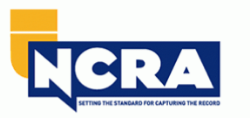Trial Presentation Advanced Technology for Engaging Courtroom Presentations
Understanding Trial Presentation: Tips for Engaging and Persuasive Court Room Strategies
In the world of test discussion, the ability to engage and encourage is extremely important. The challenge lies in flawlessly integrating them right into a natural discussion. What techniques can genuinely raise a trial presentation from average to extraordinary?
Recognizing Your Audience
To successfully understand test discussion, it is important to comprehend your audience. In the courtroom, your audience mostly includes jurors, the court, and rival guidance. Each team possesses distinct perspectives, experiences, and biases that can influence their reception of your disagreements. Jurors, for instance, are charged with analyzing proof and establishing realities based upon their personal ideas and worths. Understanding their demographics, backgrounds, and potential prejudices can help tailor your discussion to resonate with them efficiently.

An awareness of the court's choices and court rules is just as crucial, as it can impact the flow of your discussion. Juries may prioritize brevity and clarity, so presenting your instance in an uncomplicated manner can enhance your credibility. Additionally, acknowledging the rival advise's techniques can aid in preparing counterarguments that properly address their points.
Ultimately, recognizing your audience permits you to engage them better, fostering link and persuasion throughout the trial (trial presentation). By leveraging understandings about their inspirations and expectations, you can produce an engaging presentation that reverberates and ultimately influences the end result of the case. This foundational understanding is vital for any lawyer intending to achieve success in the court
Crafting a Compelling Narrative
A well-crafted narrative functions as the foundation of an efficient trial discussion, leading the target market with the intricacies of the case. This story ought to be structured to involve jurors mentally and intellectually, making the truths relatable and reasonable. By weaving together the components of the situation-- such as the timeline, vital events, and critical statements-- lawyers can create a coherent story that resonates with jurors.
To attain this, it is crucial to identify the central motifs that will certainly drive the narrative. Lawyers need to concentrate on the inspirations and objectives of the events entailed, highlighting the human facets of the case (trial presentation). This strategy not only maintains juror passion but also fosters compassion, leading them to attach personally with the story
Each segment of the narrative ought to construct towards an engaging climax, finishing in a persuasive conclusion that strengthens the instance's core message. Inevitably, a solid narrative not just makes clear the problems at hand yet also produces a long-term impression that can affect the outcome of the test.
Utilizing Visual Aids Efficiently
Just how can aesthetic help improve the efficiency of a trial discussion? Visual aids work as powerful devices that can considerably improve juror understanding and retention of intricate info - trial presentation. When utilized thoughtfully, they can clarify bottom lines, show relationships, and highlight crucial evidence that supports the instance narrative
Reliable visual help consist of charts, charts, timelines, and images, which can streamline complex information and offer context. A timeline can succinctly share the sequence of occasions, while a graph can highlight analytical information in a visually interesting way. The strategic usage of multimedia presentations can additionally enhance involvement and maintain juror passion throughout the trial.
In addition, aesthetic aids can aid to stimulate psychological responses, reinforcing the human components of a situation. By presenting photos or videos relevant to the case, lawyers can develop a much more engaging and relatable story. Nevertheless, it is vital to ensure that aesthetic aids are skillfully article source created and not overly intricate, as this can result in confusion rather than clearness.
Involving Body Language Strategies
Visual aids are not the only tools that can enhance the effectiveness of a test discussion; involving body movement methods also play a crucial role in catching juror interest and conveying self-confidence. A speaker's nonverbal cues can significantly affect jurors' assumptions and responses, making it important to grasp these techniques.

Furthermore, varying your singing tone and pace can enhance your storytelling, making it much more engaging. Pausing tactically allows jurors to absorb essential information and indicates the relevance of what you are stating. Finally, moving actively within the court can help reinforce your points, supplied it does not distract from your message.
Incorporating these body movement methods will not only boost your court room presence yet additionally cultivate an even more convincing link with jurors, ultimately adding to the success of your trial presentation.
Exercising for Effect
Effective test discussions pivot website link not just on the material but additionally on the delivery, making technique vital for impact. The significance of wedding rehearsal can not be overemphasized; it enables lawyers to fine-tune their arguments and develop a powerful visibility in the court room. Participating in deliberate method aids attorneys to determine their staminas and weaknesses, allowing them to read what he said adjust their pacing, tone, and body movement accordingly.
To practice for effect, replicate test conditions as carefully as feasible. This consists of using visual help, practicing in front of coworkers, and obtaining positive feedback.

Conclusion
Understanding test discussion entails a complex approach that combines audience understanding, narrative development, visual aids, and body language. Strenuous technique in substitute settings better strengthens these techniques, guaranteeing that each presentation resonates and leaves a long-term perception on the court.